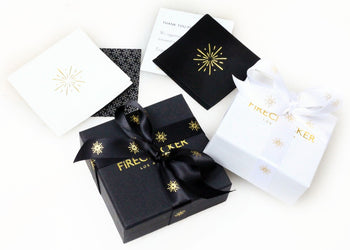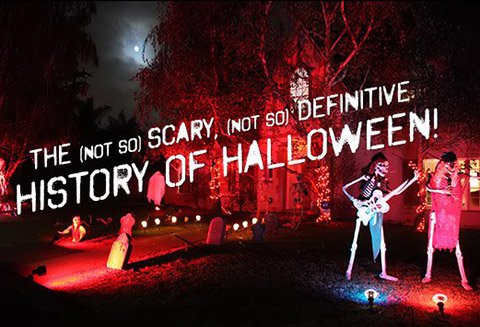While watching joyous bands of costumed children roam the streets like sugar-addled marauders, the origins of this American tradition are -- well, like so many things in American history -- not of American origin at all.

While contemporary celebrations often feature joyous bands of costumed children roaming the streets like sugar-addled marauders, the origins of this one of a kind American tradition are -- well, like so many things in American history -- not of American origin at all.
Who, then?
Here’s a hint: they never met a fight they didn’t like, and missed nary an opportunity to headhunt, decapitate their enemies, and store the noggin booty as trophies and status symbols.

The Celts. Exactly.
Halloween stems from the ancient Celtic festival Samhain (pronounced "sah-win", meaning "summer's end" in Gaelic). It was a celebratory time to herald the end of the harvest season and kick off preparations for the cold, hard months ahead.
Like many festivities of the time, Samhain also served as a tribute to the underworld, in the hopes that the earth’s dormancy (and rebirth) as winter approached would be looked upon favorably by those undead who were thought to be running the show.
In terms of the ancient Celts, however, they were A) less concerned that the deceased might rise en masse from their graves and wreak unholy havoc on the living, than B) making sure they had enough food in the winter larder.
Personally? We would have focused on "A".

Costumes & Fire
No matter their reasoning, the Celts still didn't take any chances. They remained concerned enough about roiling the underworld that they also developed a unique backup plan: the deployment of handcrafted masks, costumes, and bonfires to honor and/or appease the deceased.
Because as any respected historian will tell you – or anyone watching one of the 367 U.S. television shows currently featuring zombies – funky handmade costumes and enormous fires always ward off the undead.

Bats
The Celts roaring bonfires attracted insects to the party. Which in turn attracted legions of bats to eat said partying insects. Which is why bats are part of Halloween lore to this day, as compared to evil flying pigs or some such thing.
The end.
Tricks/Treats, Part 1: Soul Survivors
Nine out of ten dentists agree: What we call “trick-or-treating” springs from the late medieval practice of "souling".
The less fortunate would go door to door on Hallowmas (November 1) in the hopes of receiving food in return for their prayers for the inhabitant’s dead on All Souls Day (November 2). It is believed that Samhain ultimately fused with this ritual, and October 31st took the prize to be called “Halloween”.
According to folklorist Jack Santino in American Folklore: An Encyclopedia, the celebration was ultimately brought to the United States “with the earliest Irish immigrants, then by the great waves of Irish immigrants fleeing the famines of the first half of the nineteenth century.”
The earliest known stateside reference to Halloween was in the early 1900s when east coast newspapers reported seeing children and teenagers bobbing for apples & serenading their neighbors with rhymes and songs in exchange for goodies. The practice didn’t become more widespread until the mid to late 1930s, with the first known use of the term "trick or treat" appearing in national publications in 1939.

In some U.S. states, however, “trick or treat” was an unpopular term and was replaced by something, um… less majestic: “Begging”. In fact, October 31st is often still referred to as Beggars Night in parts of Ohio, Iowa, and Massachusetts, among other U.S states. In that vein, although a majority of early 20th century communities across the USA saw trick-or-treating as a cheery, local way to reduce indiscriminate Halloween vandalism, others actually saw it as a horrendous stain on the American character. (See “begging”, above.)
In 1948, for instance, child members of the Madison Square Boys Club in New York unfurled a huge Halloween banner that read "American Boys Don't Beg!" Nice try, guys, but by the end of the decade magazines and radio shows all across the U.S. regularly employed the term “trick or treat”.
In 1952, the custom would finally become forever entrenched in popular American culture through the then -- and current -- reigning champion of shaper of young minds: a Walt Disney cartoon. Entitled, naturally, Trick or Treat. The rest is candy loving history.
Tricks/Treats, Part 2: Modern Times
Come this October 31st, we all know the drill.
Roving bands of miniature witches, bloodthirsty pirates, and incandescent fairy princesses will gleefully tromp from residence to residence, ring the bell fifty million times, and let fly a thunderclap of "Trick or treat!”
Contemporary mores dictate that if one lives in a child friendly neighborhood and/or building in the city, you have two simple choices:
1) Stock up on never-ending mounds of candy that thrill your excited visitors, or
2) Turn off all the lights and cower in silence until the night is over.
Remember: the phrase “trick or treat” is historically a veiled, albeit charming threat. That is, to play a trick on you or decimate your property if no treat is given. And no, this is not some newfangled, modern approach. Back in the late 1800s, outhouse tipping, unhinging of gates, and the ubiquitous throwing of eggs were the commonplace childlike response against those unfortunate candy-less scrooges.
Which is why here at Firecracker Central, we throw open the doors on October 31st and dole out copious amounts of the good stuff. One, because we love Halloween and thrill to the sight of happy children doing their thing, and two, while we may not have outhouses to worry about anymore…
… why take a chance with our gate?



